One of my earliest memories in photographic terms is the cover of a novel called “To Catch a Spy” by Eric Ambler I think. It carried a picture of an early Leica. From that time on Leitz and Leica cameras have always been a lingering desire but never came within reach. But finally I now own a lens made by this legendary firm in the shape of a screw mount Leitz Elmar 90mm LTM. From the serial number it was made in 1960 so is quite a late example of the 4-element version starting life in the 1930s.

My recent purchase of a Canon 7 sparked a desire to get additional lenses and this lens appeared at a very reasonable price with a local dealer, 60% of the price asked for a Serenar 100mm also on offer. This brings me to the pinch of salt.
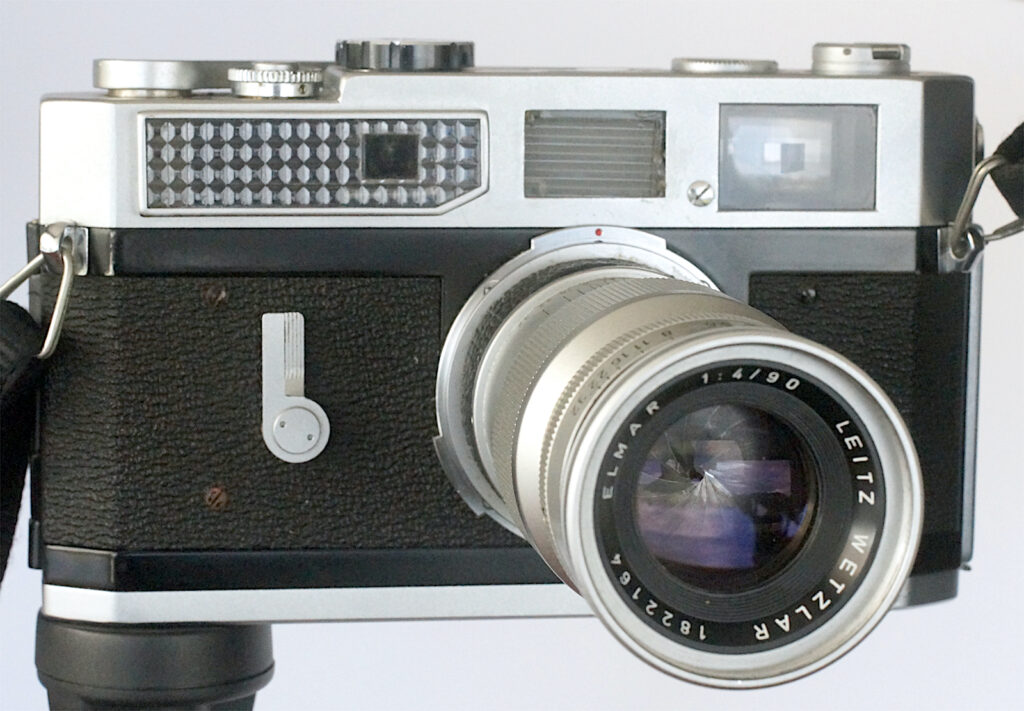
As always I research any prospective purchase as one does and, like my Woodman 5×4, this lens seemed to be something of the poor relation. There were some more favourable opinions though and looking at some of the images posted it didn’t seem all that bad a performer, the problem seeming to do with lacking rarity as much as anything. So I took the less favourable reviews with that pinch of salt I mentioned and bought it. There certainly is something about it that speaks of high quality and I can understand the regard that Leitz products are held in having had an actual example in my hands. It is all metal in that silky silvery finish with clear well defined lettering and deep, well placed knurling. Even the front and back caps have this about them. Not a hint of less than the highest quality anywhere. And good as the Canon is that will carry it, it has an entirely different visual and tactile quality.
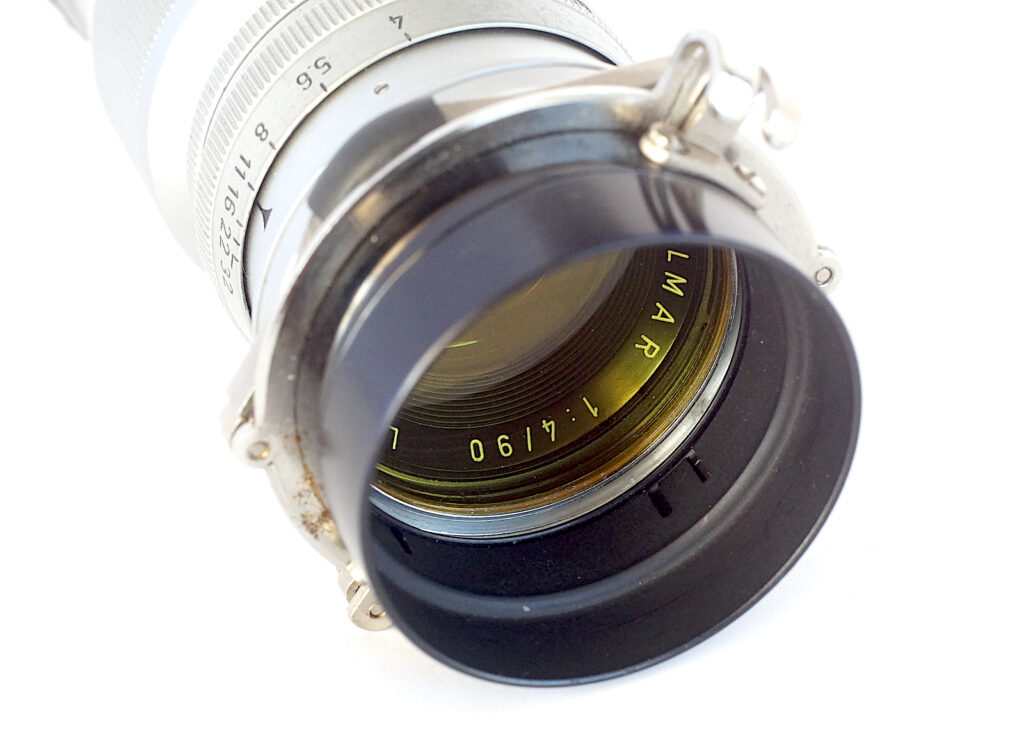
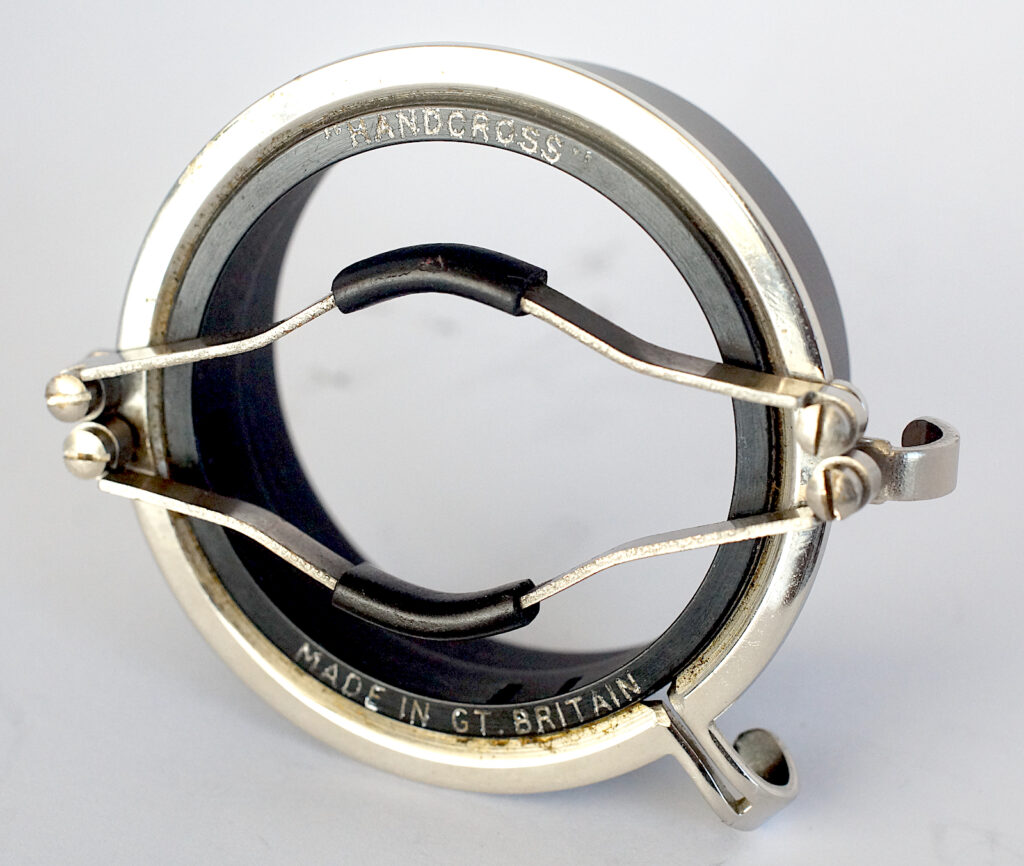
Being quite compact at only f4 max. it balances nicely on the camera and they seem to play nicely together focus wise. It came with a yellow filter which was fortunate because the only lens hood I have that could come near is a Handcross adjustable and is just a fraction too small at its widest to fit the lens itself but the filter is that tiny bit narrower so that it just goes on. In conditions not requiring a hood, the filter would probably not be needed either.


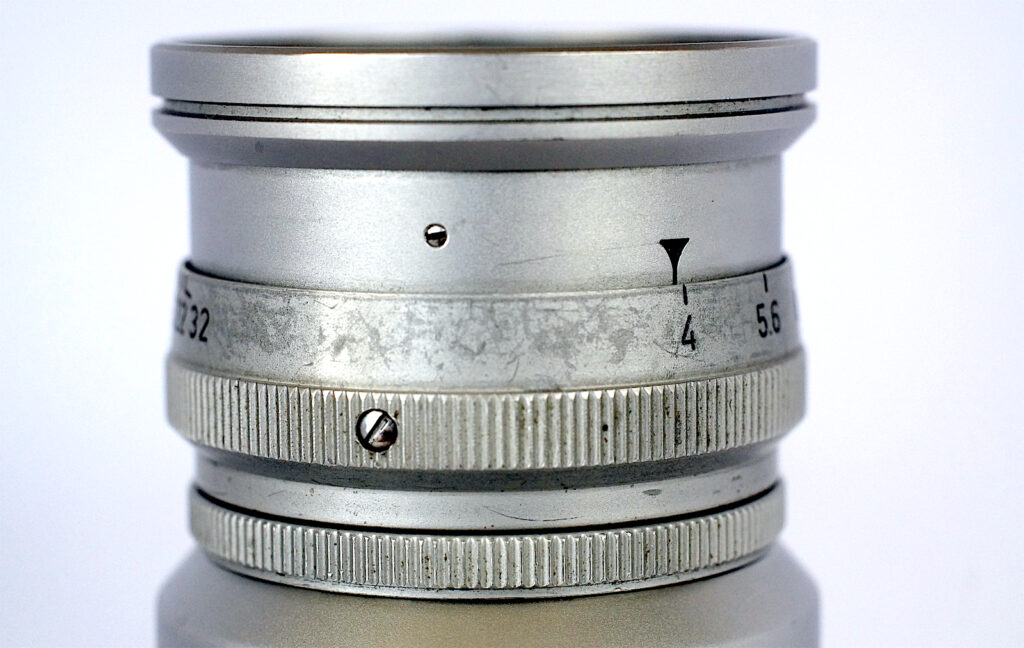
Condition wise there is little to fault having clean glass and very little wear showing, any more than you would expect from reasonably careful use over 60+ years, just some rubbing on the aperture scales and slightly grubby serrations. Focus and aperture adjust smoothly, the aperture scales being duplicated on opposite sides because it rotates with focus. A thoughtful touch.

Worth noting, the rear, screw-on cap prevents the focus from going all the way to infinity which had me puzzled for a while until I checked it again when mounted on the camera.
The lens also comes apart, separating the lens head from the helical focus section for close work when using specialised equipment.
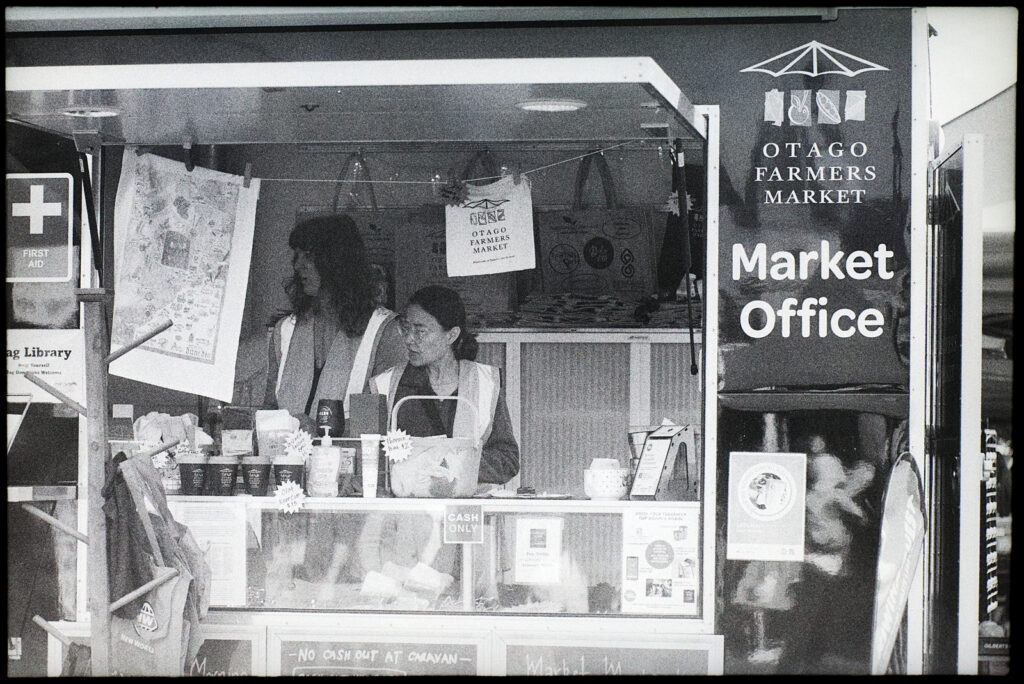
First roll of film
For its first outing I took it to the local Farmers’ Market on a bright day, a bit cloudy at times. I shot most frames at f4 or f5.6 to use a higher shutter speed and get the best idea of how the lens would perform and a couple at f8. All were shot without a lens hood or filter.

This weekly market is held in the car park next door to Dunedin’s heritage railway station and is very popular not just to buy produce. I think refreshment stalls of one sort or another are almost as plentiful as the ones selling things. As a result is is very crowded indeed, not unexpected on such a nice day as this was.
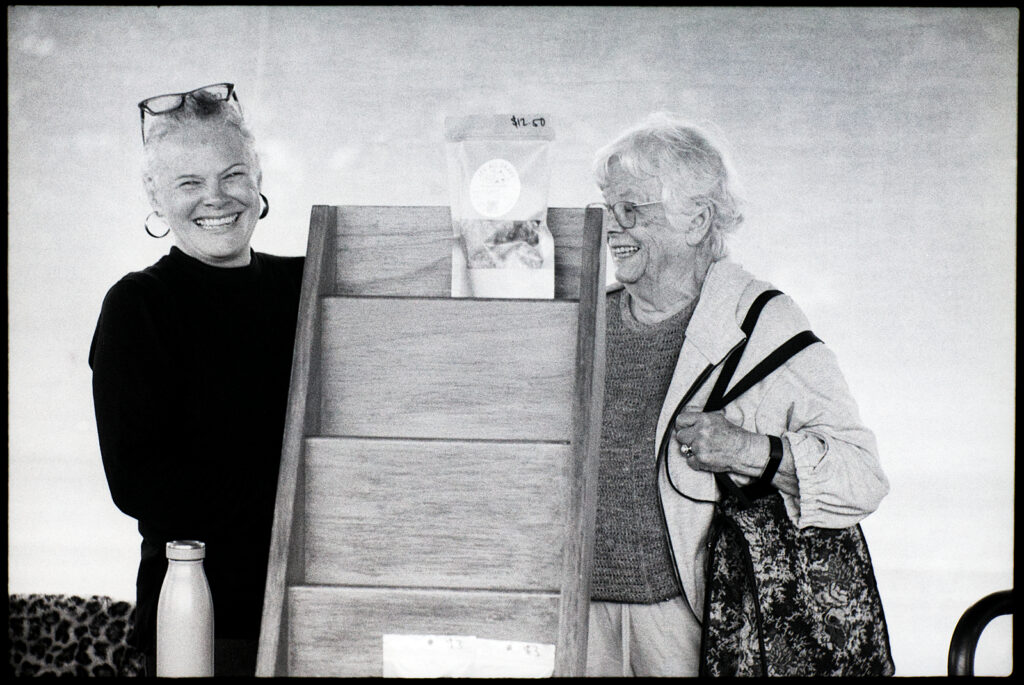



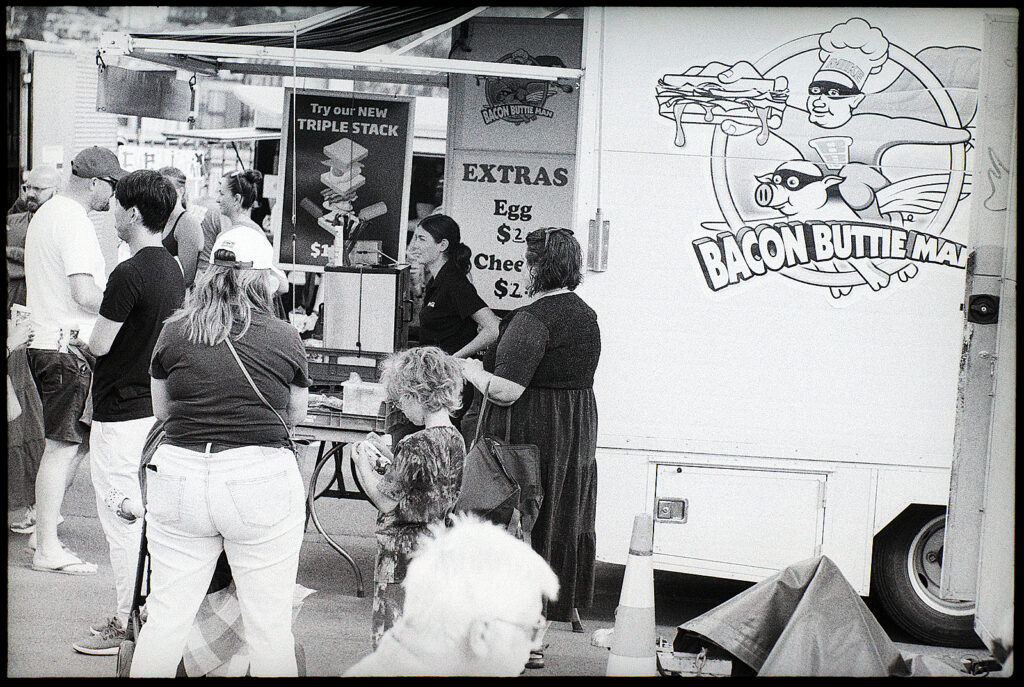
Reaction
But what did all this tell me about the new lens? Well, quite a bit and all good I must say, its performance living up to its construction quality.
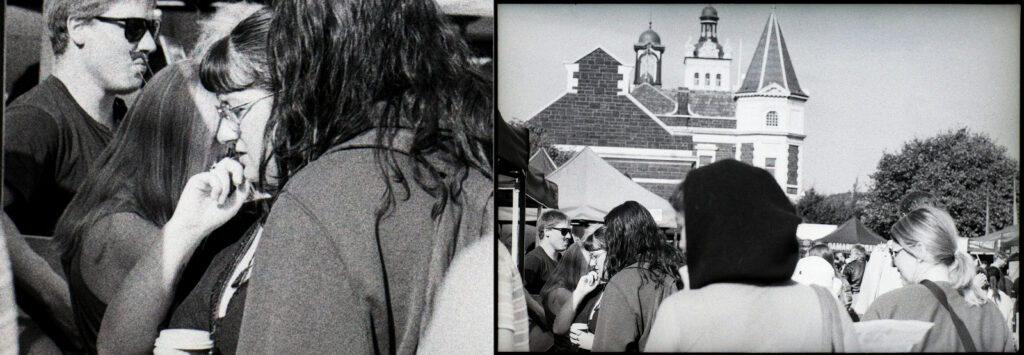
One of the criticisms I saw had been corner sharpness. This shot is taken at f8 granted but there is nothing wrong here for sure with the enlarged corner section. Sharpness overall is quite remarkable. I will normally apply USM in a small amount multiple times as a final step in post, in Affinity the settings are 0.3pixels radius / 0.9 factor / 0 threshold which I will normally apply three or four times, one after the other. With this lens I have been applying it only once, or occasionally twice which speaks volumes for its native sharpness.

One thing that intrigues me about the Elmar, both this lens and the 50mm, is the apparently unconventional placement of the diaphragm. This seems to have it close to the rear, cemented element while the 50mm looks to have it immediately behind the front element. I haven’t been able to find much information, either specific or in general about this. The shot of the bottles at f4 show quite a smooth depth of field but not aggressively defined and dof seems to be what is influenced by diaphragm location from what little I have turned up.

At the end of the day, I give the Leitz Elmar 90mm LTM the thumbs up, just like this young stall minder. I don’t think I could be bothered with the film loading of the pre-M models and the Canon is behaving and handling well. Not a hint of the shutter hesitation I saw earlier. So I might well be looking for Leitz glass in the future to use with it.
Share this post:

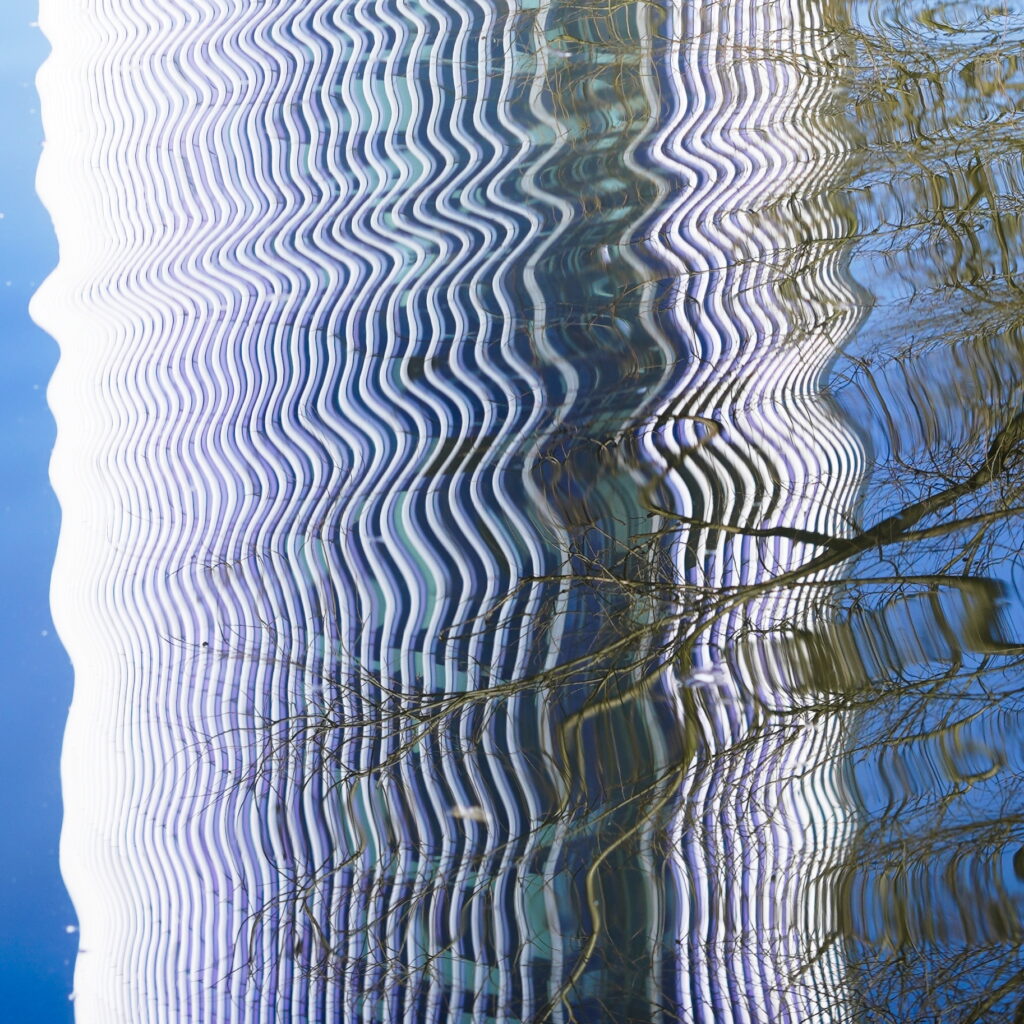
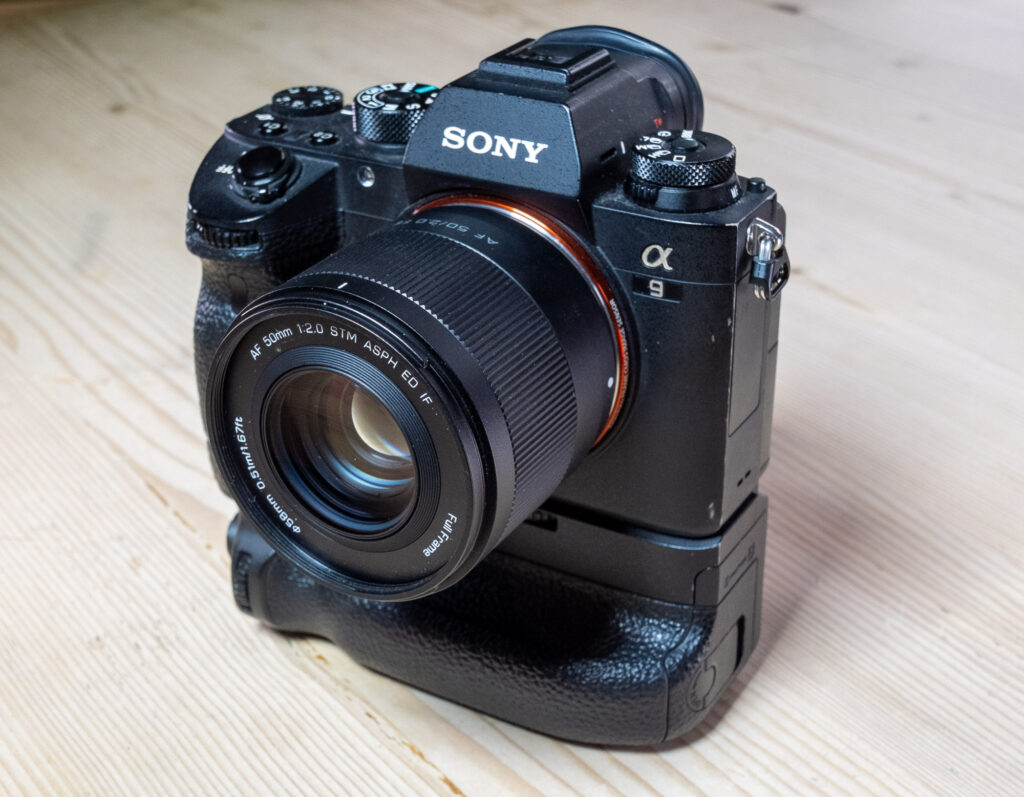
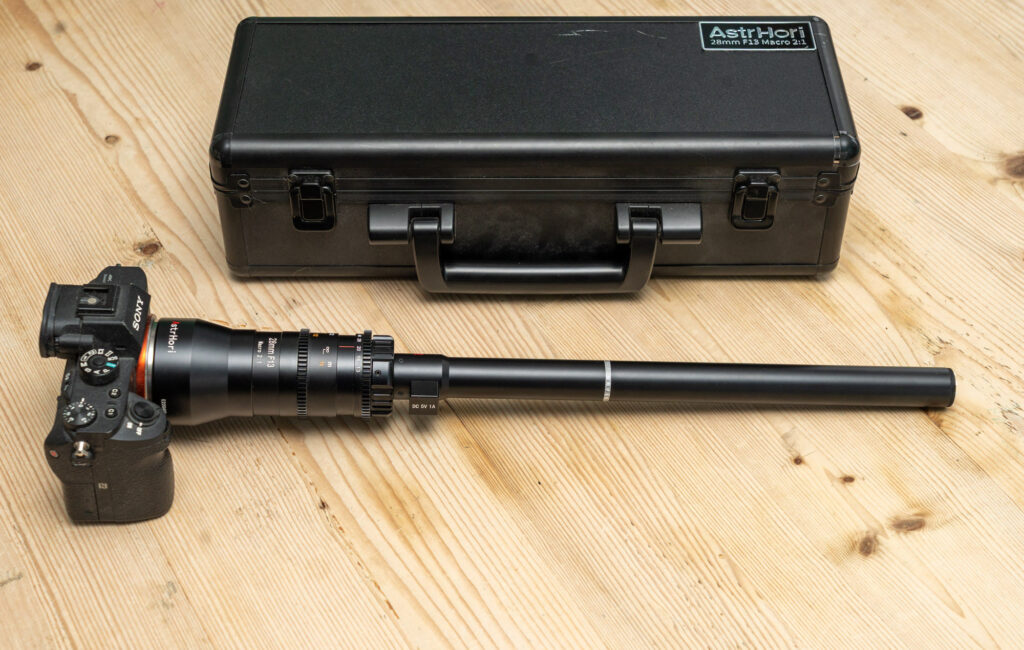
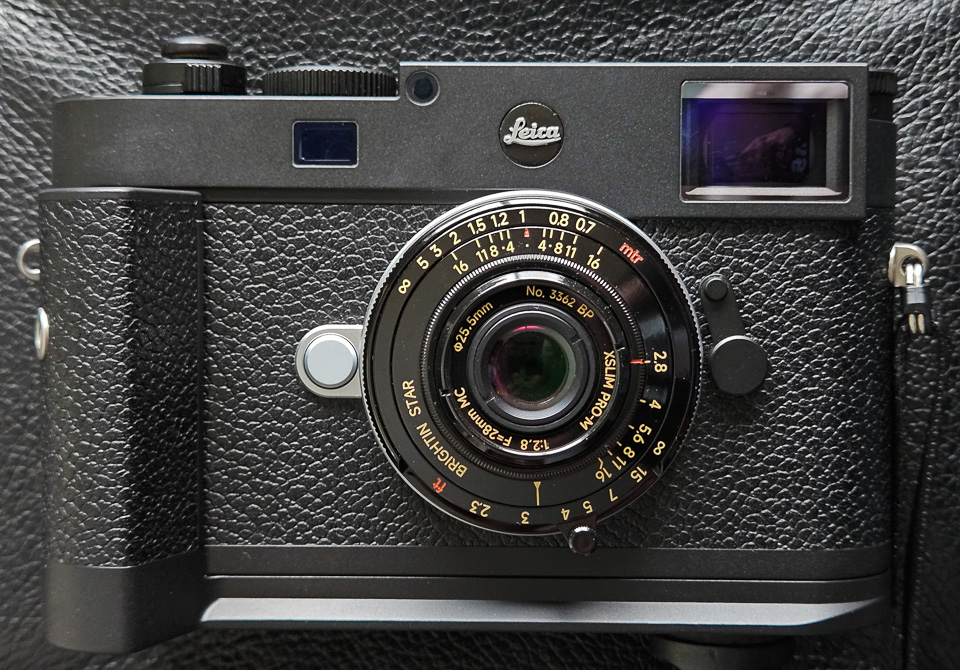
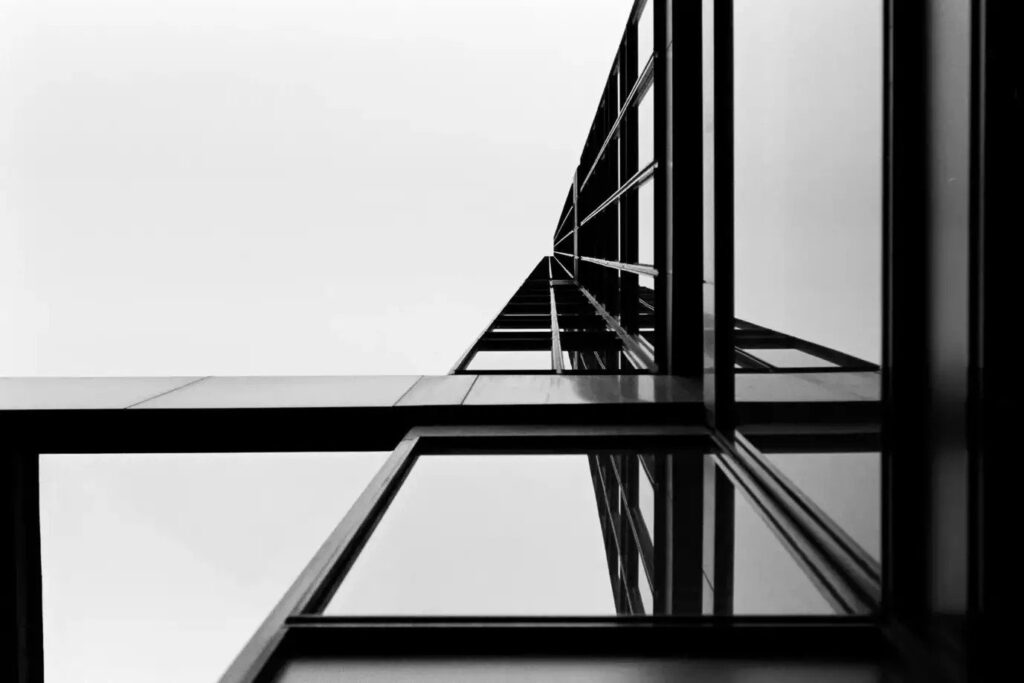
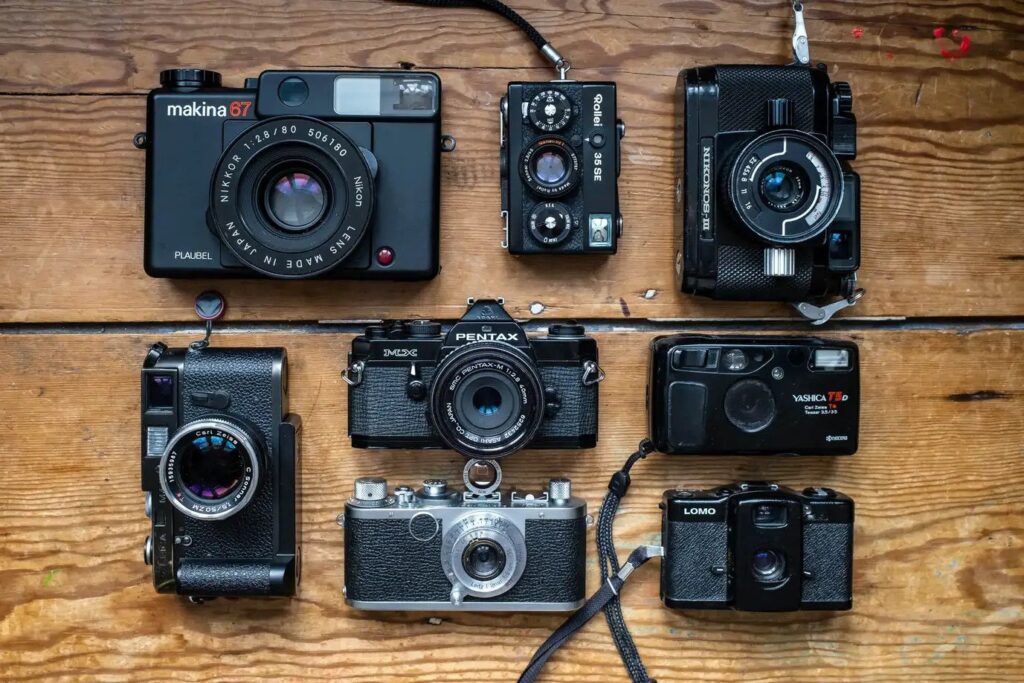
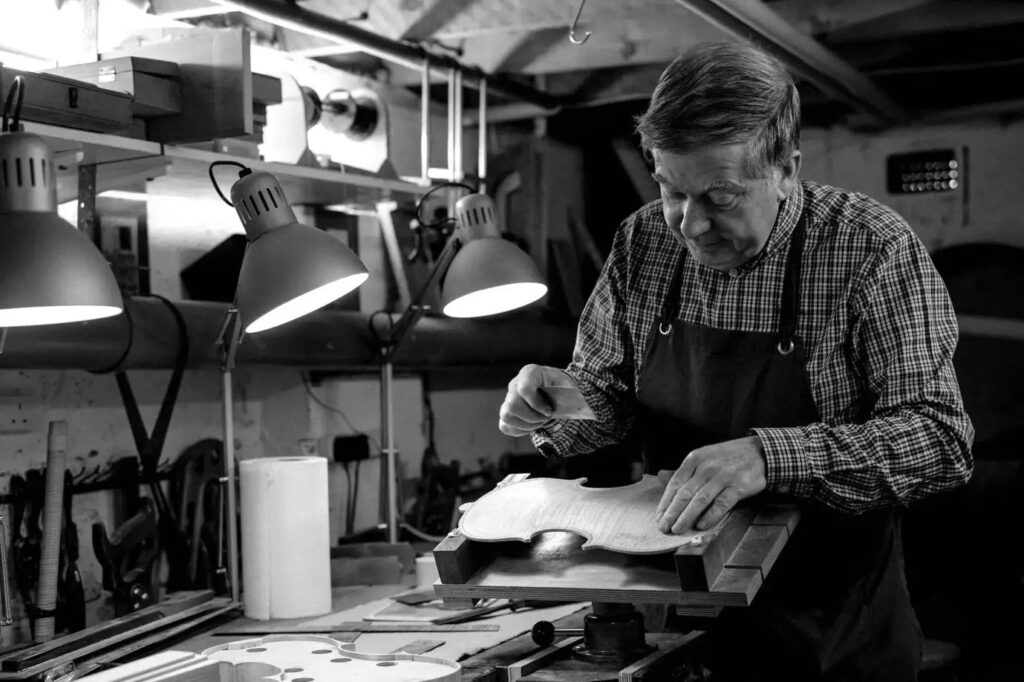
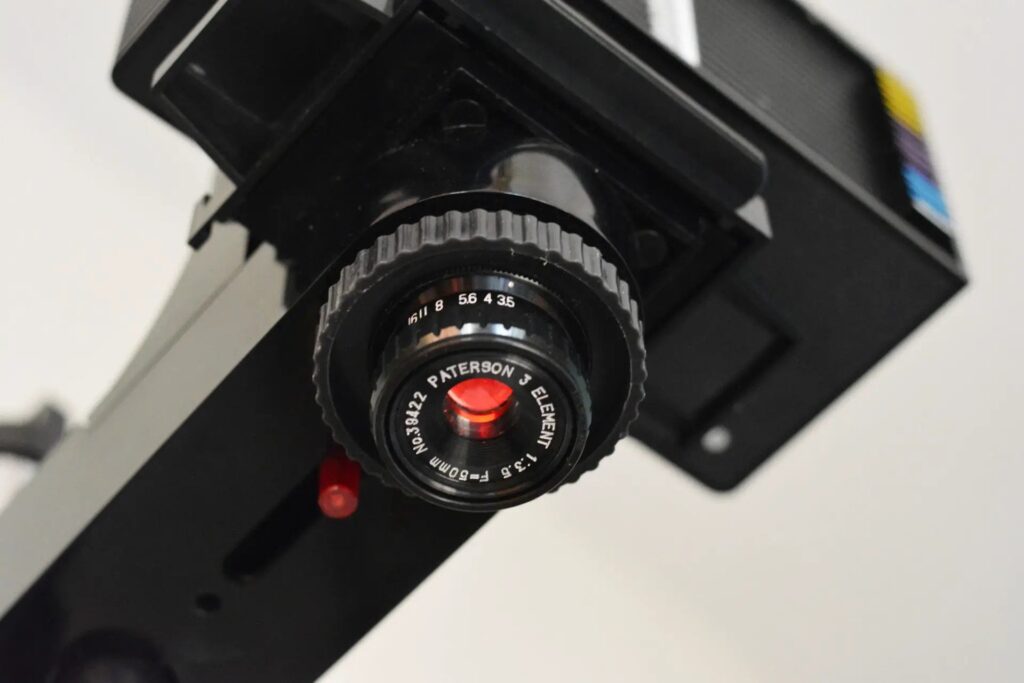
Comments
Geoff Chaplin on A Leitz Elmar 90mm LTM and a pinch of salt.
Comment posted: 07/04/2025
Comment posted: 07/04/2025
David Pauley on A Leitz Elmar 90mm LTM and a pinch of salt.
Comment posted: 07/04/2025
Comment posted: 07/04/2025
RichardH on A Leitz Elmar 90mm LTM and a pinch of salt.
Comment posted: 07/04/2025
I am pleased to see this outstanding lens receiving some attention ("Thumbs Up!"). I purchased a clean 1949 version six months ago for very little money. These 9cm Elmars appear for sale at a fraction of the price of 85mm lenses of any make. My example has nice coating, but it is susceptible to flare. A hood usually remedies that. While most short telephoto lenses are heavy, the Elmar is small, light, and easy to carry.
Comment posted: 07/04/2025
Gary Smith on A Leitz Elmar 90mm LTM and a pinch of salt.
Comment posted: 07/04/2025
Thanks for your article Tony!
Comment posted: 07/04/2025
Reed George on A Leitz Elmar 90mm LTM and a pinch of salt.
Comment posted: 07/04/2025
Comment posted: 07/04/2025
Alexander Seidler on A Leitz Elmar 90mm LTM and a pinch of salt.
Comment posted: 08/04/2025
Comment posted: 08/04/2025